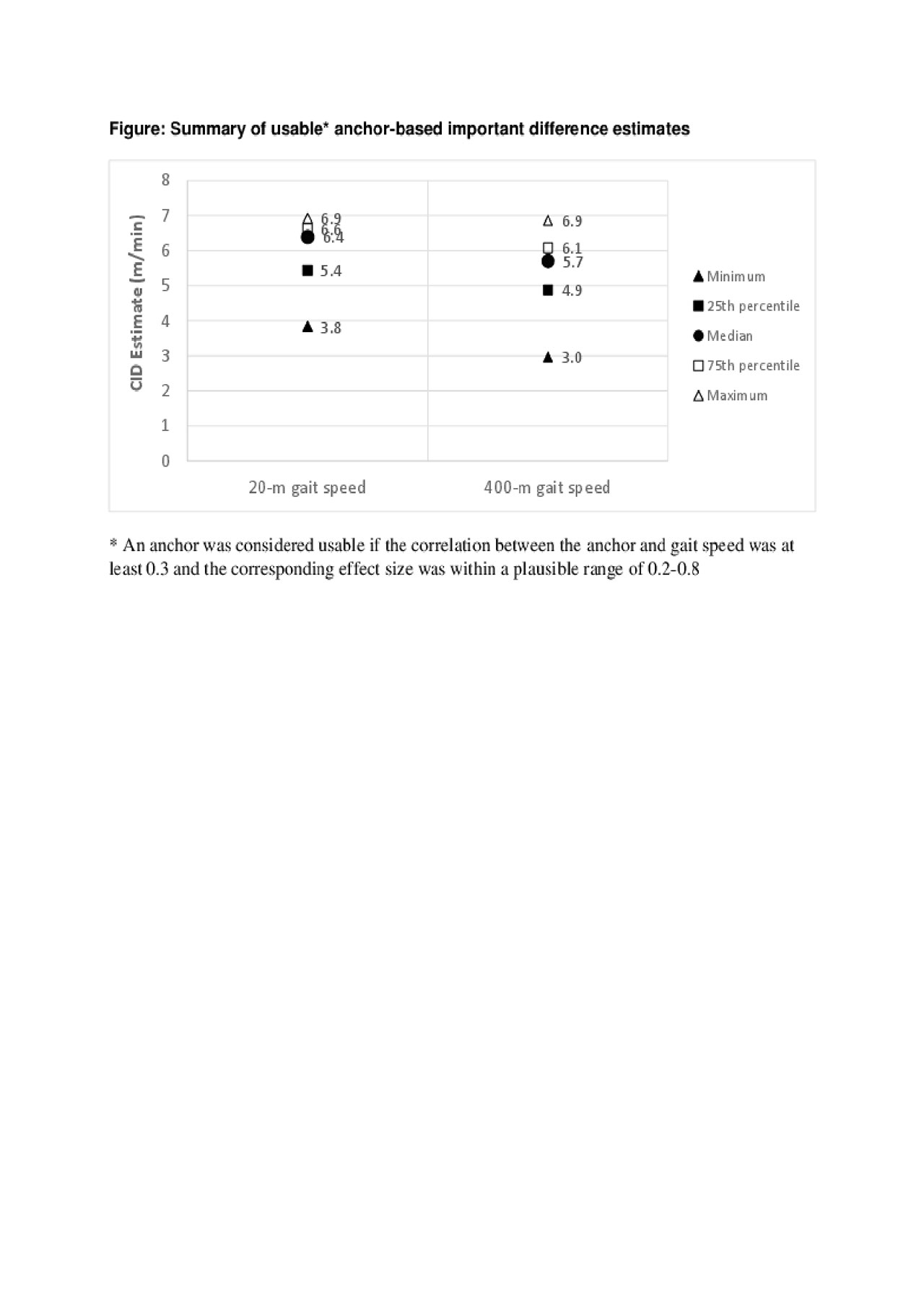Session Information
Session Type: Poster Session (Tuesday)
Session Time: 9:00AM-11:00AM
Background/Purpose: Little is known regarding what difference in functional performance measures are clinically significant in individuals with a chronic medical disease. This study examines the important differences in gait speed in adults with knee osteoarthritis.
Methods: Functional performance was objectively measured by gait speed using 20-meter and 400-meter walk tests among adults with radiographic knee osteoarthritis participating in the Osteoarthritis Initiative at baseline and 2 years later. Distribution-based methods were used to frame the range of gait speed likely to be considered important. We then utilized anchor-based methods using chair stand rate and self-reported physical function as anchors to calculate important gait speed differences.
Results: We included 2527 participants with radiographic knee osteoarthritis. Mean age was 62.6 years. Just over half (58%) of participants were female. Most participants were either overweight (39%) or obese (45%). Half (54%) had Kellgren Lawrence (K/L) grade 2 knee OA, 35% had K/L grade 3 knee OA and 11% had K/L grade 4 knee OA. Calculation of the distribution-based estimates resulted in a range from 4.1 to 6.4 meters/minute for 20-meter walk and 2.9 to 6.5 meters/minute for 400-meter walk. Anchor-based estimates ranged from 5.4 to 6.9 meters/minute for 20-meter walk and 3.0 to 6.9 meters/minute for 400-meter walk. Combining distribution-based and anchor-based methods we found the important gait speed difference for 20-meter walk is between 4.1 and 6.9 meters/minute and for 400-meter walk is between 2.9 and 6.9 meters/minute.
Conclusion: Our results found the important difference in gait speed for 20-meter walk and 400-meter walk are consistent with previous important difference estimates for older adult populations. These findings can provide benchmarks for assessing and understanding functional performance outcomes when comparing exposure groups and can be used in designing future studies targeting adults with knee osteoarthritis.

AGilbert.gait speed CID.ACR abstract 2019 Table

AGilbert.gait speed CID.ACR abstract 2019 figure
To cite this abstract in AMA style:
Song J, Cella D, Gilbert A, Chang R, Dunlop D. What Is an Important Difference in Gait Speed in Adults with Knee Osteoarthritis? [abstract]. Arthritis Rheumatol. 2019; 71 (suppl 10). https://acrabstracts.org/abstract/what-is-an-important-difference-in-gait-speed-in-adults-with-knee-osteoarthritis/. Accessed .« Back to 2019 ACR/ARP Annual Meeting
ACR Meeting Abstracts - https://acrabstracts.org/abstract/what-is-an-important-difference-in-gait-speed-in-adults-with-knee-osteoarthritis/
